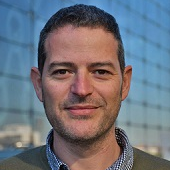Advanced Ultrasound Technology for Medical Application
A special issue of Applied Sciences (ISSN 2076-3417). This special issue belongs to the section "Acoustics and Vibrations".
Deadline for manuscript submissions: closed (31 December 2019) | Viewed by 22612
Special Issue Editors
Instituto de Instrumentación para Imagen Molecular
Interests: ultrasound imaging; ultrasound therapy
Interests: acoustics; ultrasonics; metamaterials; biomedical ultrasound; nonlinear acoustics
Special Issues, Collections and Topics in MDPI journals
Special Issue Information
Dear Colleagues,
Ultrasound technology has been extensively applied to the medical field in recent decades. Pulse-echo imaging techniques have been used as diagnostic procedures in obstetrics, cardiology and internal medicine; ultrasound elasticity imaging has become established as a clinical tool for the detection of breast, thyroid and prostate lesions as well as for liver assessment; high intensity focused ultrasound has been applied to treat uterine fibroids, prostate cancer, essential tremor, neuropathic pain and for the palliative treatment of bone metastasis; and medium intensity ultrasound is an everyday physiotherapy procedure used for drug delivery and blood–brain barrier opening. In addition, new advances in transducer technology, signal processing and contrast agents as well as the use of combined technologies, such as photoacoustics or magneto-motive ultrasound, and the discovery of the possibility of applying ultrasound to neuromodulation or immunotherapy open new areas for the use of ultrasound in medical application.
This Special Issue calls for high-quality unpublished research works related to the use of advanced ultrasound technology for medical application. Potential topics include, but are not limited to, the following:
- Ultrasound imaging;
- Focused ultrasound;
- Elastography;
- Photoacoustic;
- Magneto-motive ultrasound;
- Theranostics;
- Tissue characterization;
- Transcranial propagation;
- Medical signal processing;
- Contrast agents;
- Biomedical transducers.
Dr. Francisco Camarena
Dr. Noé Jiménez
Dr. Alejandro Cebrecos
Guest Editors
Manuscript Submission Information
Manuscripts should be submitted online at www.mdpi.com by registering and logging in to this website. Once you are registered, click here to go to the submission form. Manuscripts can be submitted until the deadline. All submissions that pass pre-check are peer-reviewed. Accepted papers will be published continuously in the journal (as soon as accepted) and will be listed together on the special issue website. Research articles, review articles as well as short communications are invited. For planned papers, a title and short abstract (about 100 words) can be sent to the Editorial Office for announcement on this website.
Submitted manuscripts should not have been published previously, nor be under consideration for publication elsewhere (except conference proceedings papers). All manuscripts are thoroughly refereed through a single-blind peer-review process. A guide for authors and other relevant information for submission of manuscripts is available on the Instructions for Authors page. Applied Sciences is an international peer-reviewed open access semimonthly journal published by MDPI.
Please visit the Instructions for Authors page before submitting a manuscript. The Article Processing Charge (APC) for publication in this open access journal is 2400 CHF (Swiss Francs). Submitted papers should be well formatted and use good English. Authors may use MDPI's English editing service prior to publication or during author revisions.
Keywords
- ultrasound imaging
- ultrasound therapy
- elastography
- photoacoustics
- transcranial propagation
- magneto-motive ultrasound
- contrast agents







